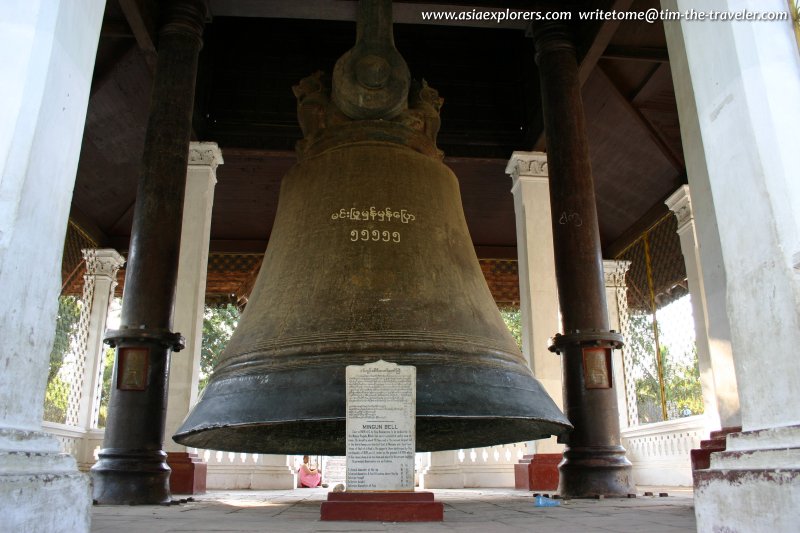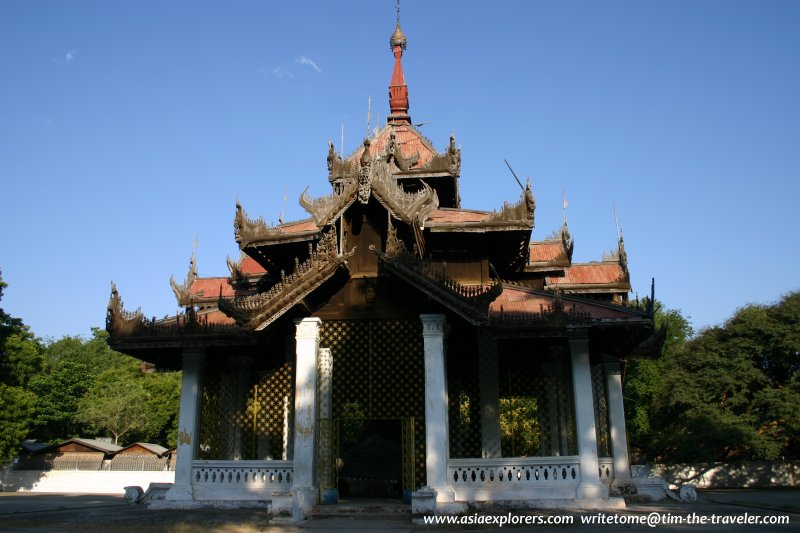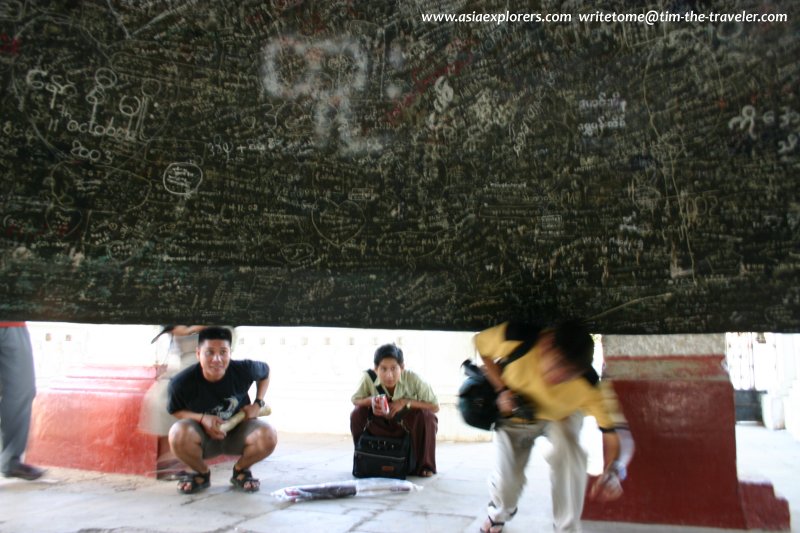 Mingun Bell (23 November 2003)
Mingun Bell (23 November 2003)
The Great Mingun Bell is the world's biggest uncracked bell, the biggest hanging bell, and the biggest bell that is able to be rung. Located in the village of Mingun, on the west side of the Ayeyarwady River, it was cast in 1808. King Bodawpaya assigned the task of casting the bell to Chief of the Metal Works, Nanda Kyaw Swa. To cast the bell, a clay mould was first made, smoothed out and then waxed.
The casting of the Bell began on the night of 29th April 1808. The amount of bronze used weighed 65,877 viss (107 tons). The words on the the girder of the Bell noted that the bell was "Cast on 23 March 1810 in the 28th year of the royal reign", meaning casting took nearly 2 years. The resulting bell weighed 55555.55 viss or 90.52 tons. To achieve a pleasant ringing tone, only five different metals were used, which are gold, silver, bronze, iron and lead.
 Mingun Bell pavilion (23 November 2003)
Mingun Bell pavilion (23 November 2003)
Casting of the Mingun Bell was done on an island in the middle of the Ayeyarwady River, where King Bodawpaya moved simply so that he could personally supervise the casting. When the bell was finally cast, the next challenge was to move it to its intended site, across the Ayeyarwady. King Bodawpaya sent his Minister of Artilleries to Yangon to look for an expert who could handle this task.
The solution was to build a barge directly under the bell. First of all a 36-foot canal was dug. They were big enough for a double-hull Karaweik barge. In 1811, King Bodawpaya ordered work to start on the barge. He wanted the barge to be heavily decorated to be fitting to the bell.
 Underneath Mingun Bell (23 November 2003)
Underneath Mingun Bell (23 November 2003)
After the barge was completed, they had to wait for the rainy season so that the river would rise and float the barge, with the bell on it. It was a big ceremony when the floating was carried out, and the king himself led the procession across the Ayeyarwady.
The Great Mingun Bell was hung north of the unfinished Mantara Gyi Pagoda (also called the Pahtodawgyi) from a 3-piece wooden beam covered with a metal plate. This beam rests on two brick pillars which are reinforced with teak poles on the inside. The 1838 earthquake damaged the support for the bell and it rested on the ground until 1896 (some accounts say 1904), when it was raised, slung on an iron beam and placed in the present tazaung, or pavilion.
The Mingun Bell measures 16 feet 3 inches on the rim and has a height of 12 feet in the exterior and 11 feet in the interior. The diameter at the top is 8 feet 6 inches. During the AsiaExplorers trip to Mingun, I (Tim) remember I could stand inside the bell with ample space around me.
 Latest updates on Penang Travel Tips
Latest updates on Penang Travel Tips
 Map of Roads in Penang
Map of Roads in Penang
Looking for information on Penang? Use this Map of Roads in Penang to zoom in on information about Penang, brought to you road by road.
Copyright © 2003-2025 Timothy Tye. All Rights Reserved.

 Go Back
Go Back